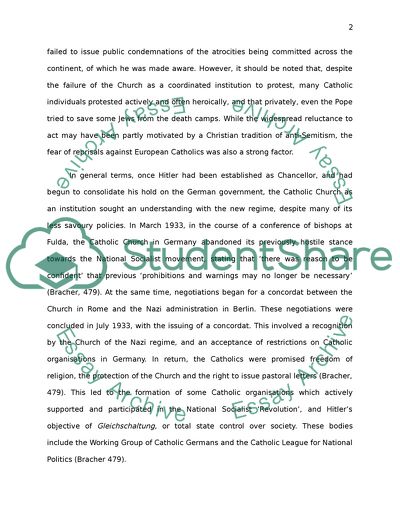Cite this document
(“The Response of the Catholic Church to Nazi Anti-Semitism Term Paper”, n.d.)
Retrieved from https://studentshare.org/miscellaneous/1569932-catholic-churchs-responses-to-nazi-anti-semitism
Retrieved from https://studentshare.org/miscellaneous/1569932-catholic-churchs-responses-to-nazi-anti-semitism
(The Response of the Catholic Church to Nazi Anti-Semitism Term Paper)
https://studentshare.org/miscellaneous/1569932-catholic-churchs-responses-to-nazi-anti-semitism.
https://studentshare.org/miscellaneous/1569932-catholic-churchs-responses-to-nazi-anti-semitism.
“The Response of the Catholic Church to Nazi Anti-Semitism Term Paper”, n.d. https://studentshare.org/miscellaneous/1569932-catholic-churchs-responses-to-nazi-anti-semitism.


